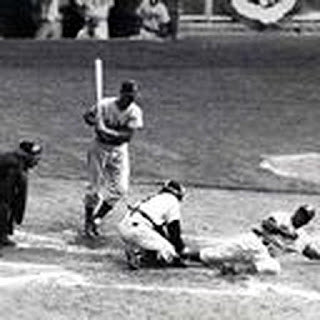BLOOMINGTON, Ind. -- A major academic conference on gospel music at Indiana University Bloomington on Saturday, Nov. 12, will feature eight musical icons as well as a performance by a large, volunteer-based community choir at a historic Bloomington church.
The public is invited to attend the conference, "Why We Sing: Indianapolis Gospel Music in Church, Community and Industry," from 9 a.m. to 4:30 p.m. at the Neal-Marshall Black Culture Center, 275 N. Jordan Ave. Doors will open at 7 p.m. for a concert at Fairview United Methodist Church, 600 W. Sixth St. The events are free of charge.
The conference will focus on how this uniquely African American music performed and recorded in Indianapolis has served to inform and enrich musical expression both locally and globally. Gospel music has been a distinctive component of religious expression in African American churches since its rise to prominence in the mid-20th century.
"This is really a contribution to expanding the body of knowledge that exists about gospel music nationwide," said Mellonee Burnim, director of IU's Ethnomusicology Institute and a professor of folklore and ethnomusicology in the IU College of Arts and Sciences.
"There's a challenge of doing research within the context of a religious environment, because one of the things that happens when we're looking at religious music is there can be things that are inexplicable that occur and move beyond the dimension of the ordinary," said Burnim, one of three conference organizers.
Sherri Garrison, minister of music and director of worship at Eastern Star Baptist Church and a former director of the Gospel Music Workshop of America; Rev. A. Thomas Hill, a recording artist and pastor of Healing Streams Word & Worship Center; and Rodnie Bryant, founding director of Christian Community Mass Choir and a Tyscot Recording Artist.
"Why We Sing" will conclude with a concert at Fairview United Methodist Church, which showcases a local volunteer-based community choir, under Garrison's direction; and performances by Bryant and Lamar Campbell, who also has performed with Aaron Neville on the "Today" and "Late Night with David Letterman" shows. They will be accompanied by a four-piece live band, under the musical direction of gospel recording artist Tyron Cooper, former director of the IU Soul Revue.
Cooper, a doctoral student in folklore and ethnomusicology from Bloomington and one of the conference organizers, said the community choir, which will perform at the evening concert, has generated a lot of interest in the conference. "Every day, we hear from new folks, so this choir could be enormous," he said.
"We started this process a year ago now," added Raynetta Wiggins, a master's student in folklore and ethnomusicology from Birmingham, Ala., and another conference organizer. "Initially, I think we envisioned something rather small ... It kind of grew because we wanted to add a sonic dimension to it.
"As far as we know, nothing like this has been done -- being able to break this ground and bring this particular music into an academic setting and to document these artists and their contributions," Wiggins added.
Anyone is welcome to become a part of the community choir and can sign up by sending an e-mail to IndyGospelConference@gmail.com.
"Our plan is to take people higher and higher and higher, starting out in the morning with artists talking about their work in the community and in the church," Burnim said. "We move from that context to looking at the founders of the two largest African American record labels in Indianapolis, and then ending the conference with a third session that is forward looking, talking about directions that gospel music is moving in the 21st century."
Burnim said it is evident that the conference also will strengthen ties between IU and the larger African American community. "It was a conscious choice for us to plan the conference to be on site here at the university, because it is a way of reaching out and showing how scholarship can complement the work of members of the community across the state," she said.
Cooper, who has recorded with gospel artists as a guitarist over the last two decades, noted the multidimensional nature of people involved with the music. For example, Scott founded his music label, is a performer, a pastor, a radio personality and a full-time dentist.
"These are renaissance people," he noted. "This conference will detail the background creators. We've got executives and producers coming in and people in promotions and marketing, people who make things happen in the industry. These are people who have really been overlooked, particularly in the literature and by the lay people who listen to the music ... You don't realize the community of creators and artistic people who come together for multiple agendas, including economic, social and religious intents colliding at the same time."
"We will see, across the board, this entrepreneurial spirit that comes through," Burnim added. "These are people who have a vision of who they are as musicians and what they can do with that music."
Sponsors of the conference are the College Arts and Humanities Institute, Institute for Advanced Study, the Office of the Vice President for Equity, Diversity and Multicultural Affairs, Jacobs School of Music, Department of Folklore and Ethnomusicology, Traditional Arts Indiana, the Archive of African American Music and Culture, the Department of African American and African Diaspora Studies, the African American Arts Institute and Fairview United Methodist Church.
To speak with Burnim, Cooper or Wiggins about their project, please contact George Vlahakis at University Communications, 812-855-0846 or vlahakis@iu.edu, who has additional contact information.






























